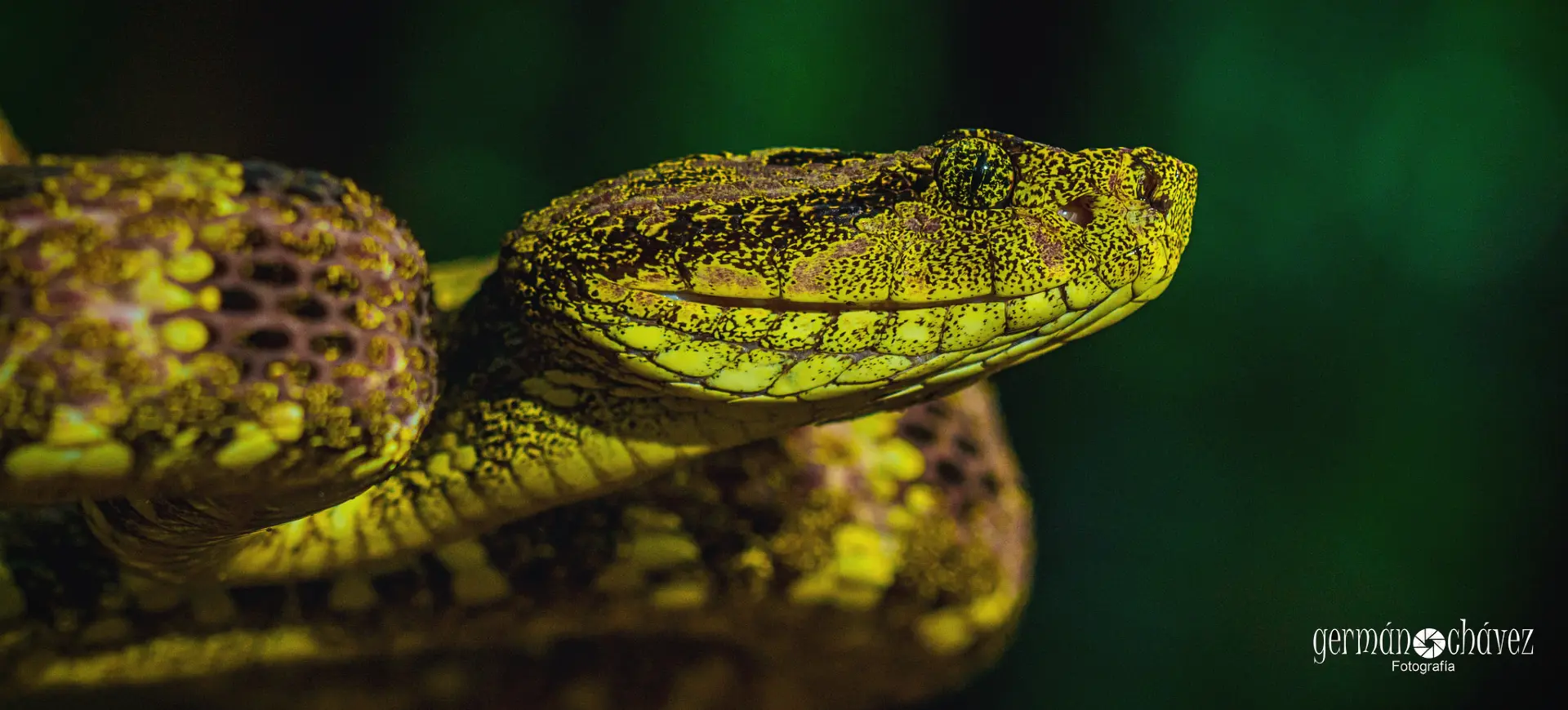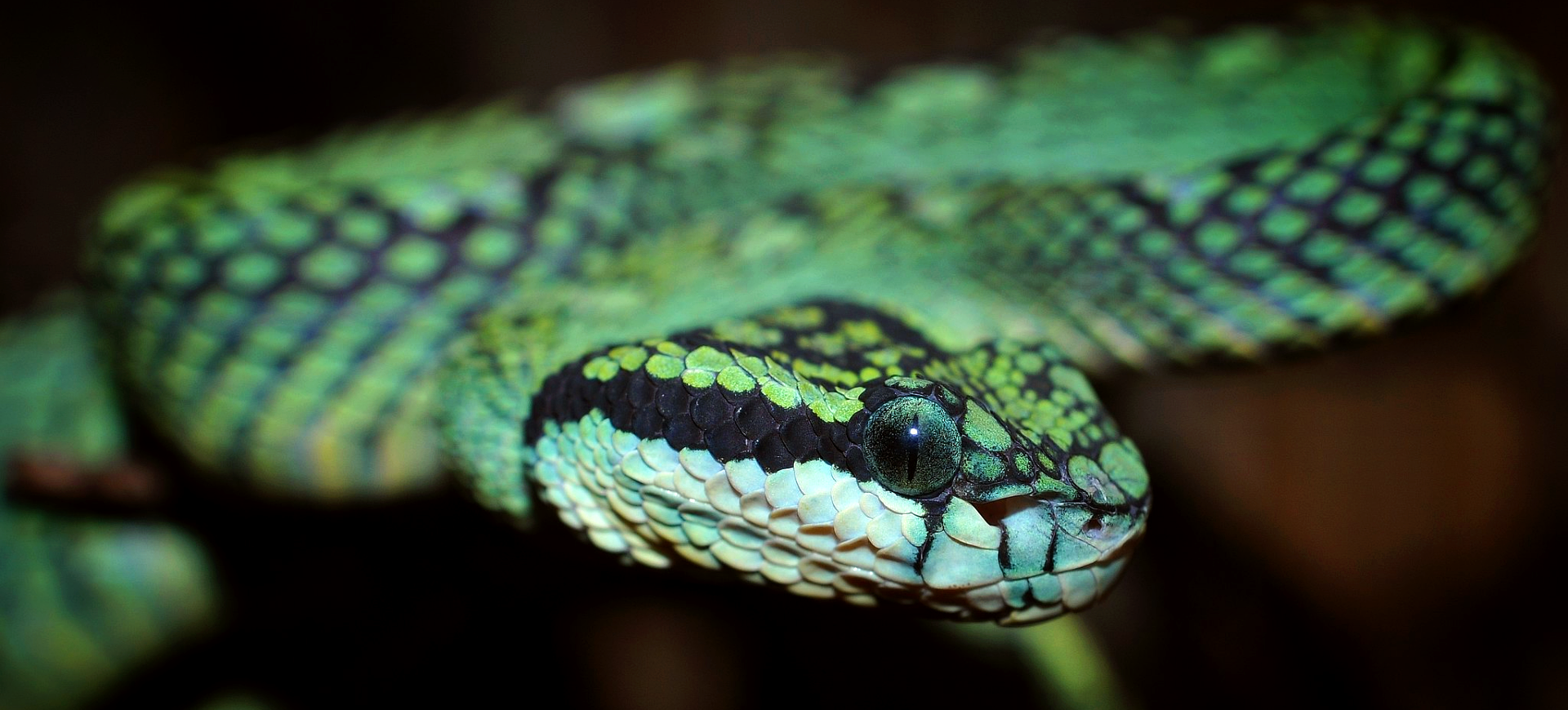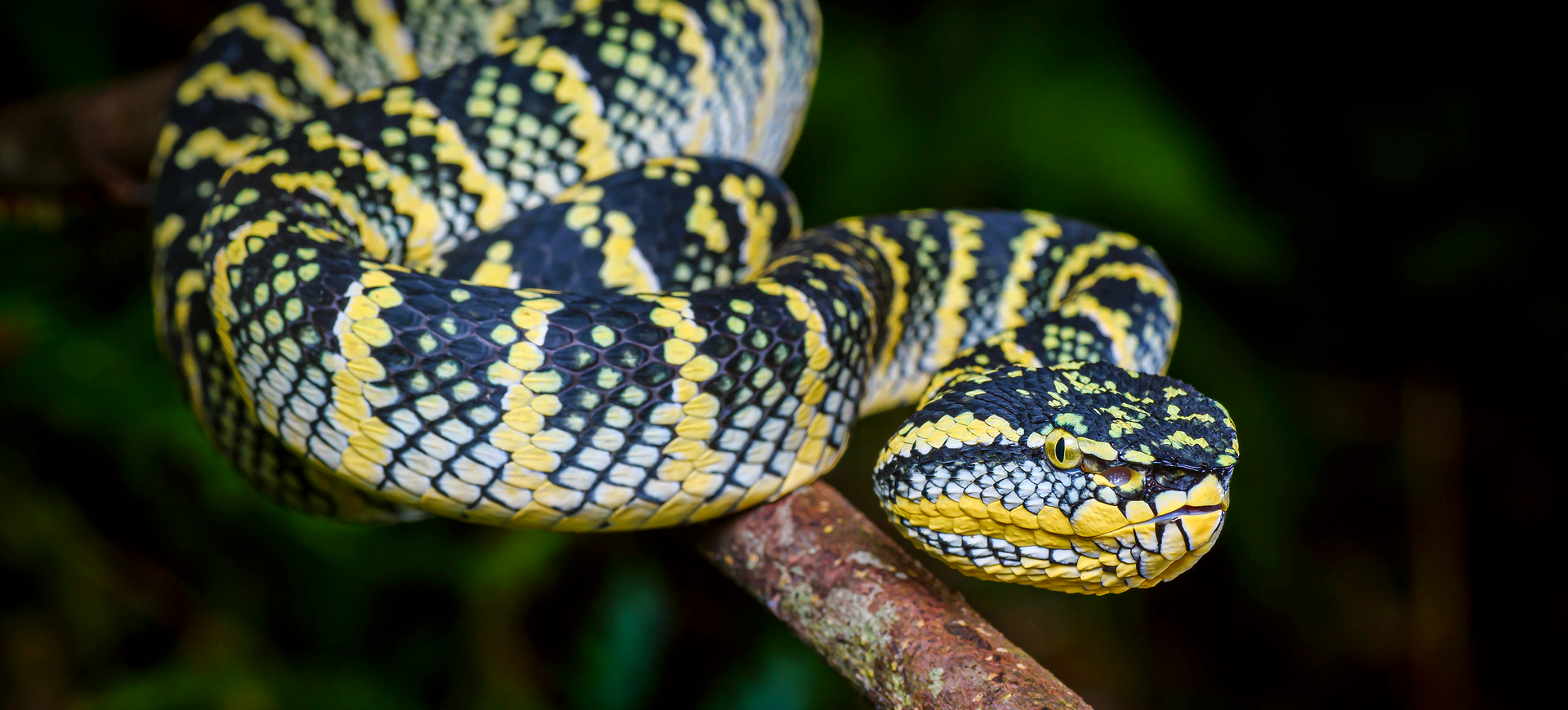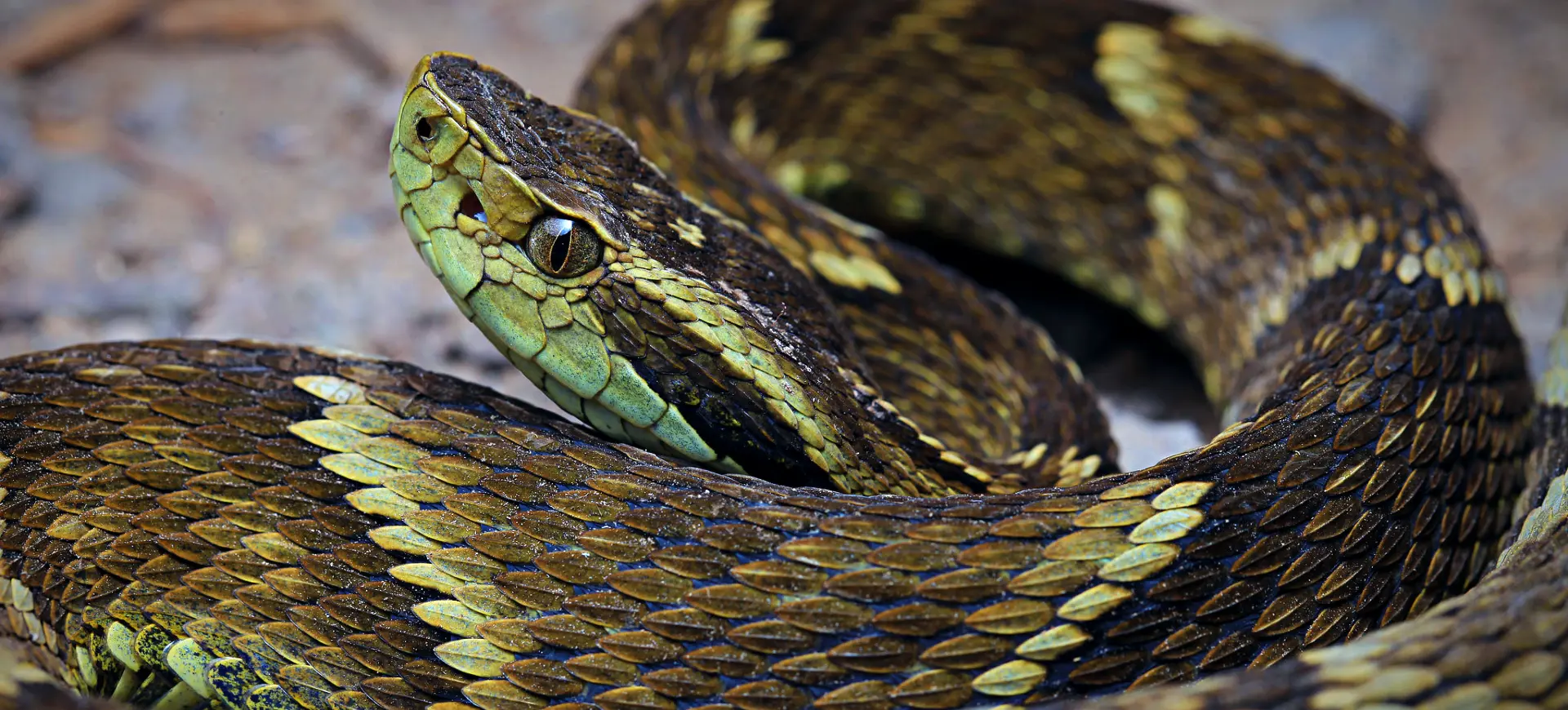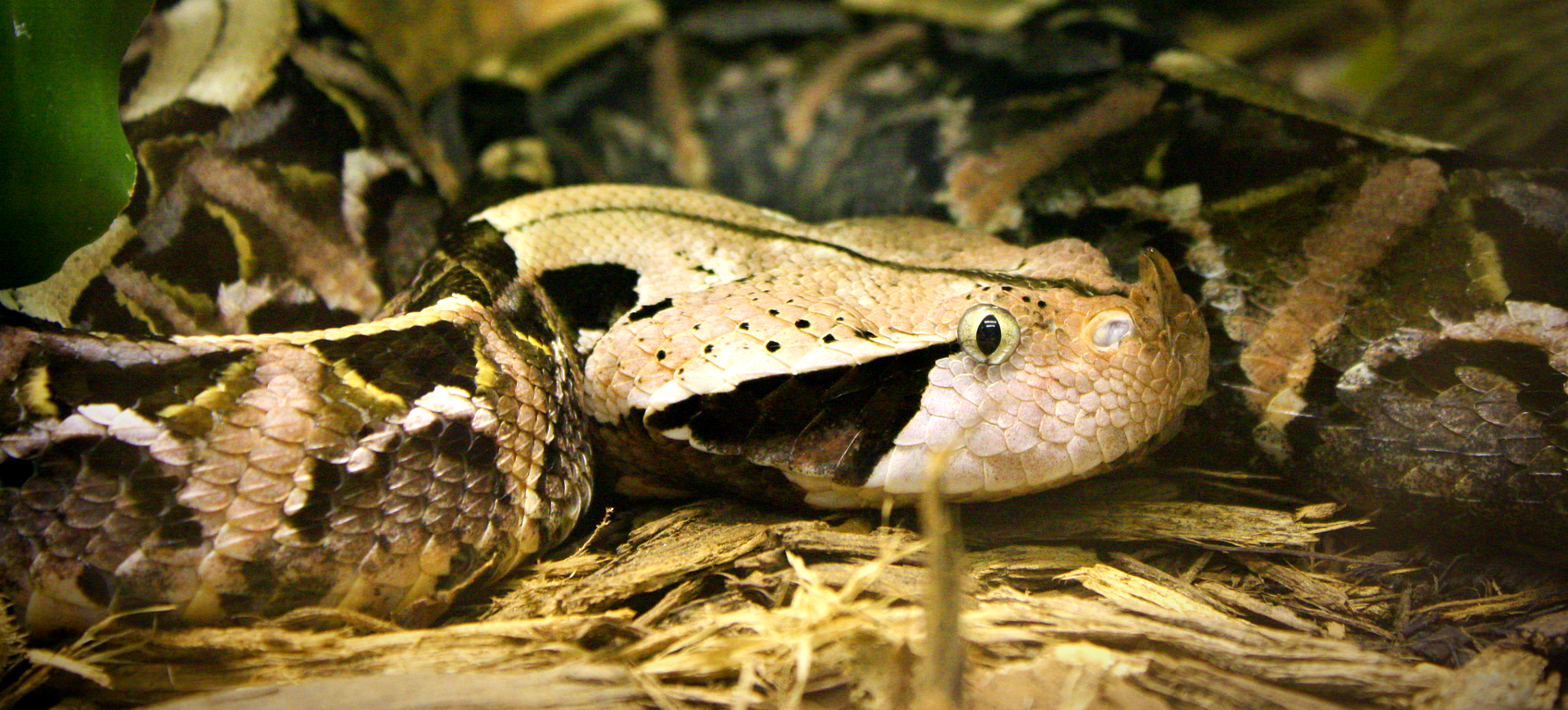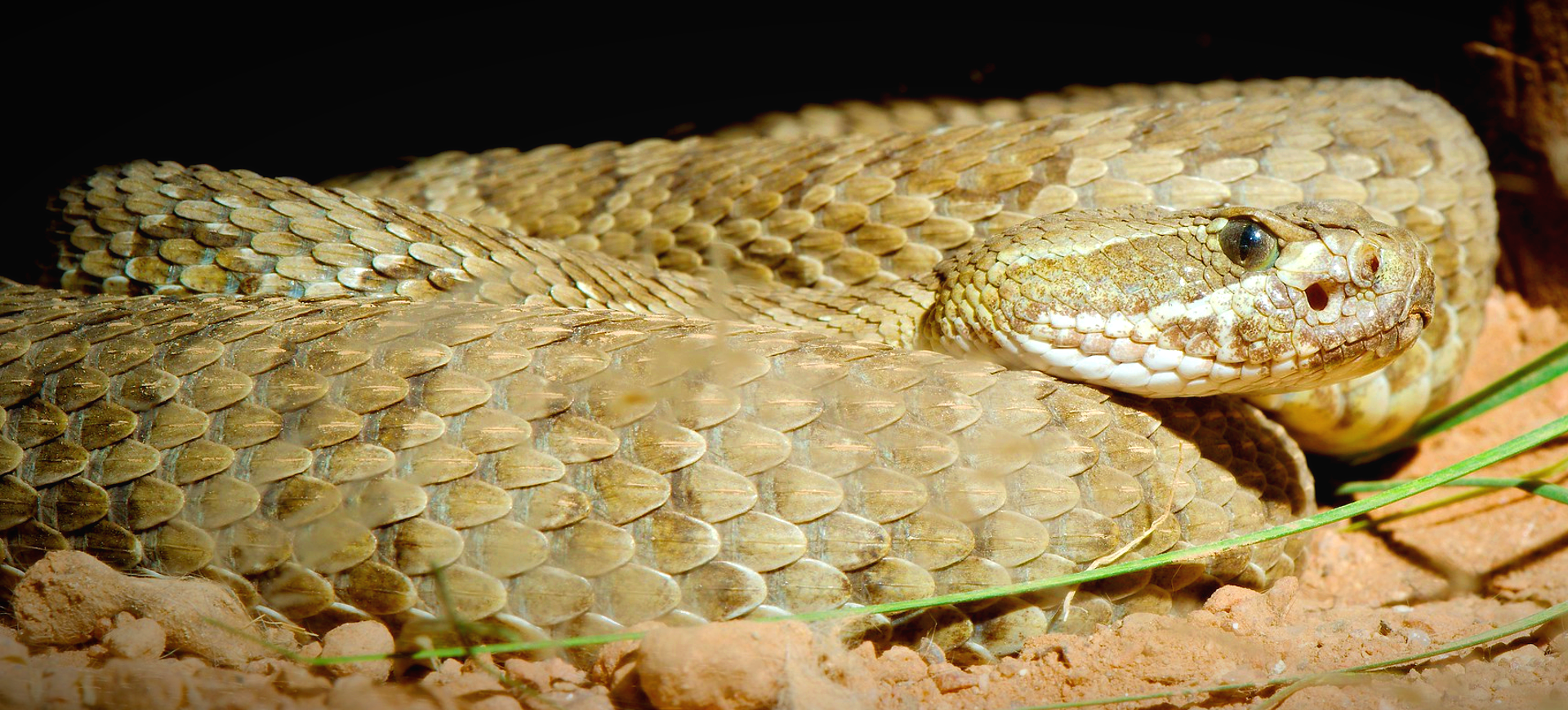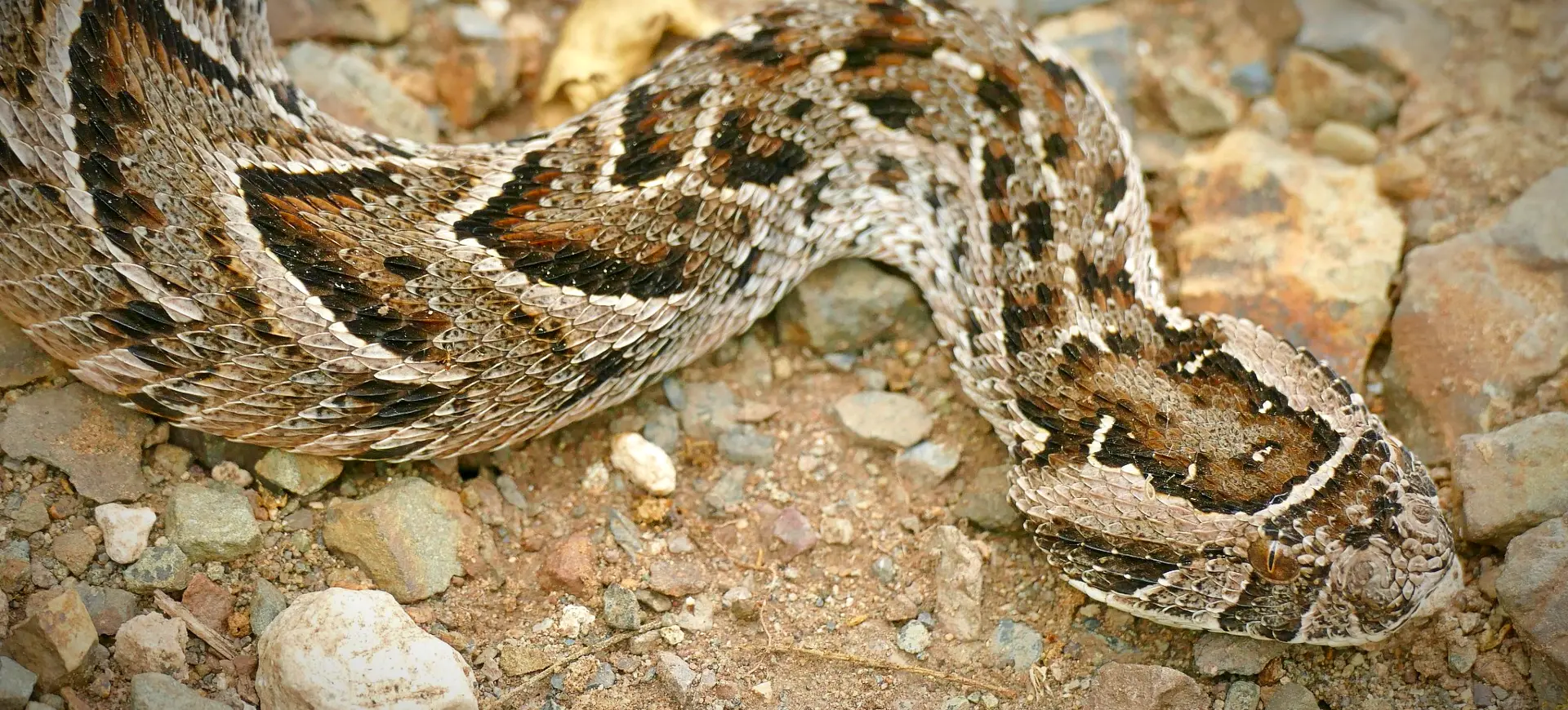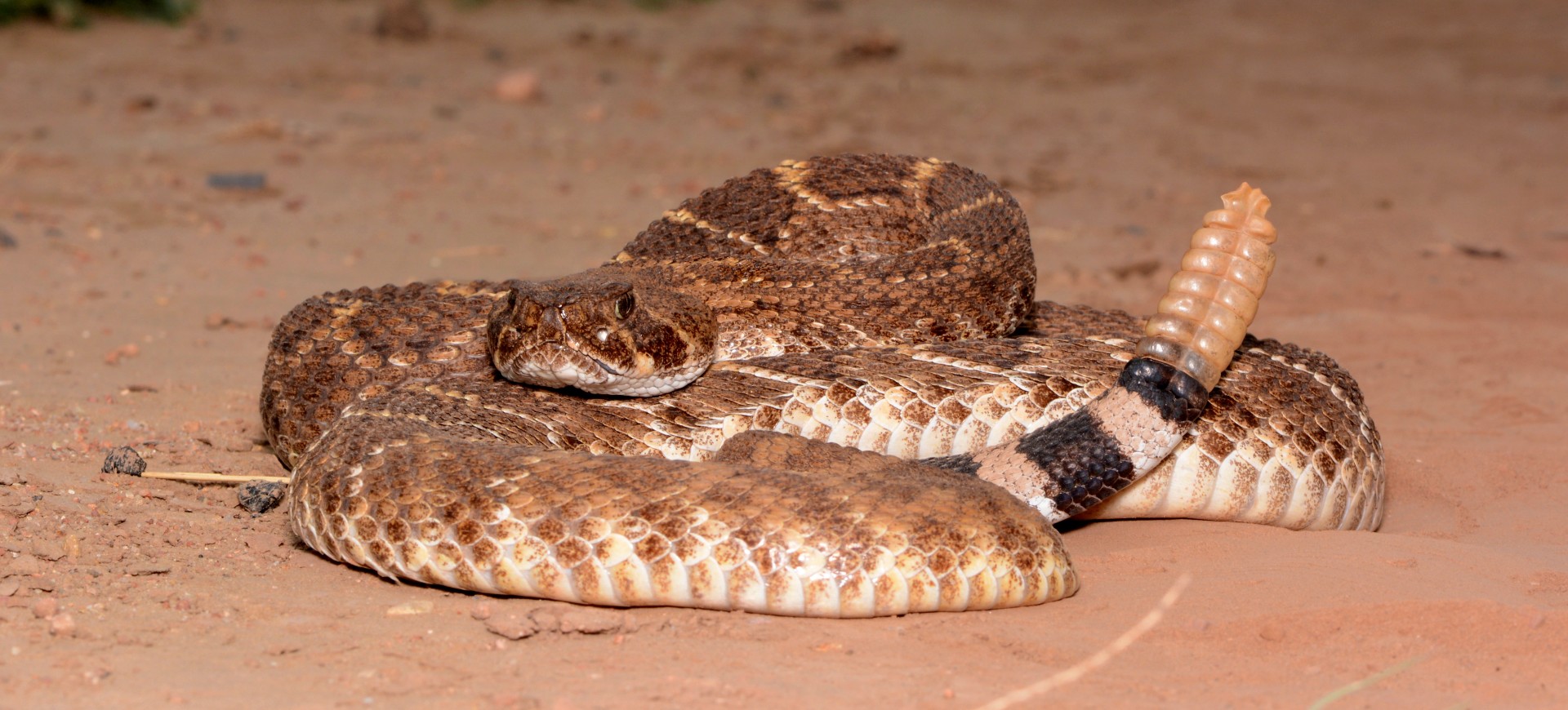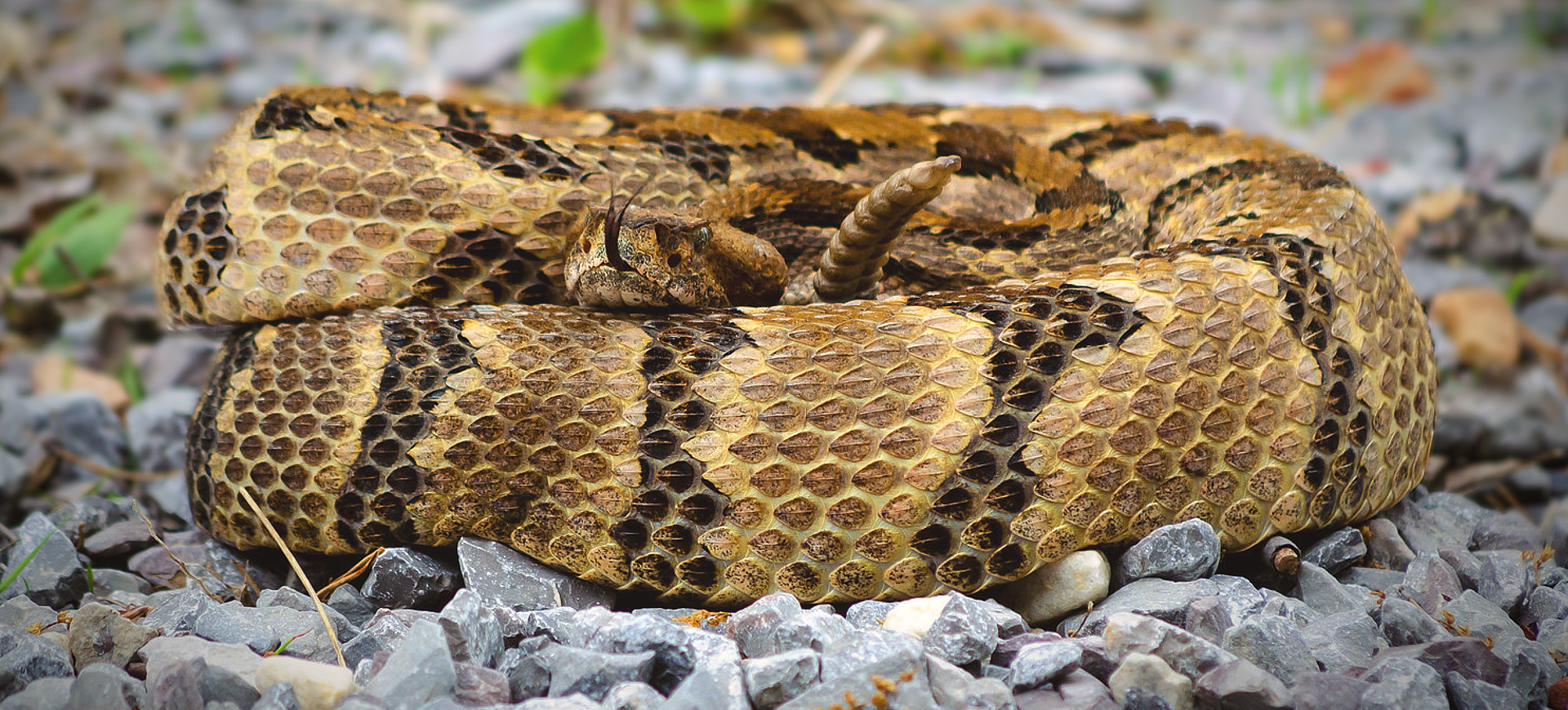Overview
The Osage Copperhead, scientifically known as Agkistrodon contortrix phaeogaster, is a venomous snake species found primarily in the central United States. This subspecies of Copperhead is distinguished by its distinctive copper-colored head and the characteristic hourglass-shaped bands along its body, which range from light tan to pinkish-brown against a darker background. Adults typically reach lengths of 2 to 3 feet, making them a medium-sized snake within their range. They inhabit various environments, including rocky forests, wooded hillsides, and river bottoms, where they blend seamlessly into the leaf litter and underbrush.
Osage Copperheads are primarily nocturnal during the hotter months, becoming more diurnal in the spring and fall. Their diet consists mainly of small rodents, frogs, insects, and occasionally other small reptiles, which they immobilize with their venom before consumption. Despite their evil nature, bites are rarely fatal to humans, with the snakes more inclined to flee than attack when encountered.
Conservation efforts for the Osage Copperhead focus on habitat preservation and public education to reduce unwarranted fear and persecution of these snakes. They play an essential role in controlling pest populations, contributing to the ecological balance of their habitats.
Taxonomy
Kingdom
Phylum
Class
Order
Family
Genus
Species
Sub Species
Type
Physical Description:
The Osage Copperhead possesses a robust and muscular body with a distinctively shaped head, broader at the back and narrowing towards the nose, which is characteristic of vipers. The copper-red head contrasts with the body’s light tan to pinkish-brown background, marked by darker, hourglass-shaped bands. This cryptic coloration provides excellent camouflage among fallen leaves and underbrush, an adaptation for ambush predation.
Juveniles resemble adults in patterning but are generally brighter in color. They are born with a yellow-tipped tail, which they use as a lure to attract prey. Over time, this bright tail color fades as they mature. The sexual dimorphism in this species is minimal, though females tend to be slightly larger than males.

Lifespan: Wild: ~10 Years || Captivity: ~18 Years

Weight: Male & Female: 0.5-0.9 lbs (227-408 g)

Length: Male & Female: 24-36 inches (60-90 cm)
Characteristic:
Native Habitat:
The Osage Copperhead is found across the central United States, with a range that includes Missouri, Kansas, Arkansas, Oklahoma, and Texas. They prefer habitats with ample cover, such as rocky forests, wooded hillsides, and the dense underbrush of river bottoms. These snakes are adept at navigating terrestrial and arboreal environments, although they are most commonly encountered on the ground.
Their habitat choice is influenced by the availability of prey, basking sites, and suitable areas for hibernation. The preservation of these natural habitats is crucial for the survival of the Osage Copperhead, emphasizing the need for conservation efforts that protect these ecosystems.
Climate Zones:
Biomes:
Biogeographical Realms:
Continents:
Countries:
Diet:
Diet & Feeding Habits:
Osage Copperheads are opportunistic feeders with a diet that includes small rodents, frogs, insects, and occasionally other small reptiles. They employ a “sit-and-wait” strategy, relying on camouflage to ambush prey immobilized by venom injection. The venom subdues the prey and begins the digestive process by breaking down the tissue.
This subspecies plays a vital role in controlling pest populations within their ecosystem, thereby maintaining the balance between predator and prey. The frequency and type of prey consumed depend on the snake’s size, age, and the availability of food sources in their habitat.
Mating Behavior:
Mating Description:
Osage Copperheads engage in mating activities primarily in the spring and sometimes again in the fall. Males compete for access to females through ritualistic displays and combat, which may include intertwining their bodies and wrestling. Females give birth to live young, typically in late summer or early fall, with litter sizes ranging from 1 to 14 offspring.
The young are born fully equipped with venom and capable of fending for themselves, receiving no parental care post-birth. This ovoviviparous reproduction is advantageous in their temperate environment, as it allows the mother to regulate the temperature of the developing embryos, ensuring a higher survival rate among neonates.
Reproduction Season:
Birth Type:
Pregnancy Duration:
Female Name:
Male Name:
Baby Name:
Social Structure Description:
Osage Copperheads are generally solitary, with most social interactions occurring during the mating season. Their interactions are limited outside of breeding, although they may share hibernation sites with other individuals. These communal hibernacula are critical for survival during the cold months, providing a safe and stable environment for brumation.
Understanding the social behavior and habitat requirements of Osage Copperheads is essential for their conservation, particularly in identifying and protecting key hibernation sites and foraging areas. Efforts to preserve these areas contribute to the overall health and stability of Copperhead populations.
Groups:
Conservation Status:
Population Trend:
Overall, the population of the Osage Copperhead is considered stable, though localized declines have been observed in areas heavily impacted by human activity. Conservation efforts are focused on habitat preservation, minimizing negative interactions with humans, and education to reduce persecution and fear of these snakes.
The primary threats to their survival include habitat destruction due to urban expansion and agriculture, road mortality, and illegal collection. Protected areas and habitat restoration projects are vital for maintaining stable populations of Osage Copperheads across their range.
Population Threats:
The Osage Copperhead faces several threats, including habitat loss and fragmentation, direct persecution by humans, and mortality from road traffic. Misunderstanding and fear often lead to the indiscriminate killing of these snakes. Additionally, illegal collection for the pet trade poses a threat to some populations.
Climate change may also impact their habitats and prey availability, potentially altering their distribution and behavior. Conservation measures must address these challenges to ensure the long-term survival of the Osage Copperhead in their natural habitats.
Conservation Efforts:
Conservation initiatives for the Osage Copperhead include habitat protection, research on population dynamics, and public education campaigns to promote coexistence. Legal protections are in place in some regions to prevent persecution and limit collection from the wild. Efforts to restore and connect suitable habitats are crucial for the species’ conservation, ensuring they have access to the resources needed for survival.
Public education and outreach aim to dispel myths about venomous snakes and highlight their ecological importance, reducing unnecessary fear and conflict. Collaborative conservation strategies involving local communities, conservation organizations, and government agencies are key to the effective conservation of the Osage Copperhead.
Additional Resources:
Fun Facts
- Osage Copperheads have a unique method of hunting, using their yellow-tipped tail as a lure to attract prey, especially when they are juveniles.
- They possess heat-sensing pits that detect prey and predators, even in complete darkness.
- Despite their venomous bite, Osage Copperheads have a relatively mild temperament and often choose to freeze or flee rather than strike.
- The venom of the Osage Copperhead is primarily hemotoxic, affecting the blood and tissues of its prey, but is rarely fatal to healthy adult humans with prompt medical treatment.
- They can swim and occasionally hunt or escape predators by entering water.
- Osage Copperheads contribute to biodiversity by controlling populations of small mammals and insects, acting as both predator and prey within their ecosystems.
- The species is adaptable, inhabiting various environments, from dry rocky outcrops to moist woodlands.
- Copperheads are among the most commonly encountered venomous snakes in their range but are also among the least likely to cause serious harm to humans.
- The pattern and coloration of the Osage Copperhead provide excellent camouflage, making them difficult to spot in their natural habitat.
- They are one of the few snake species that can change their color slightly to better blend with their surroundings, a process that is more pronounced in juveniles.








